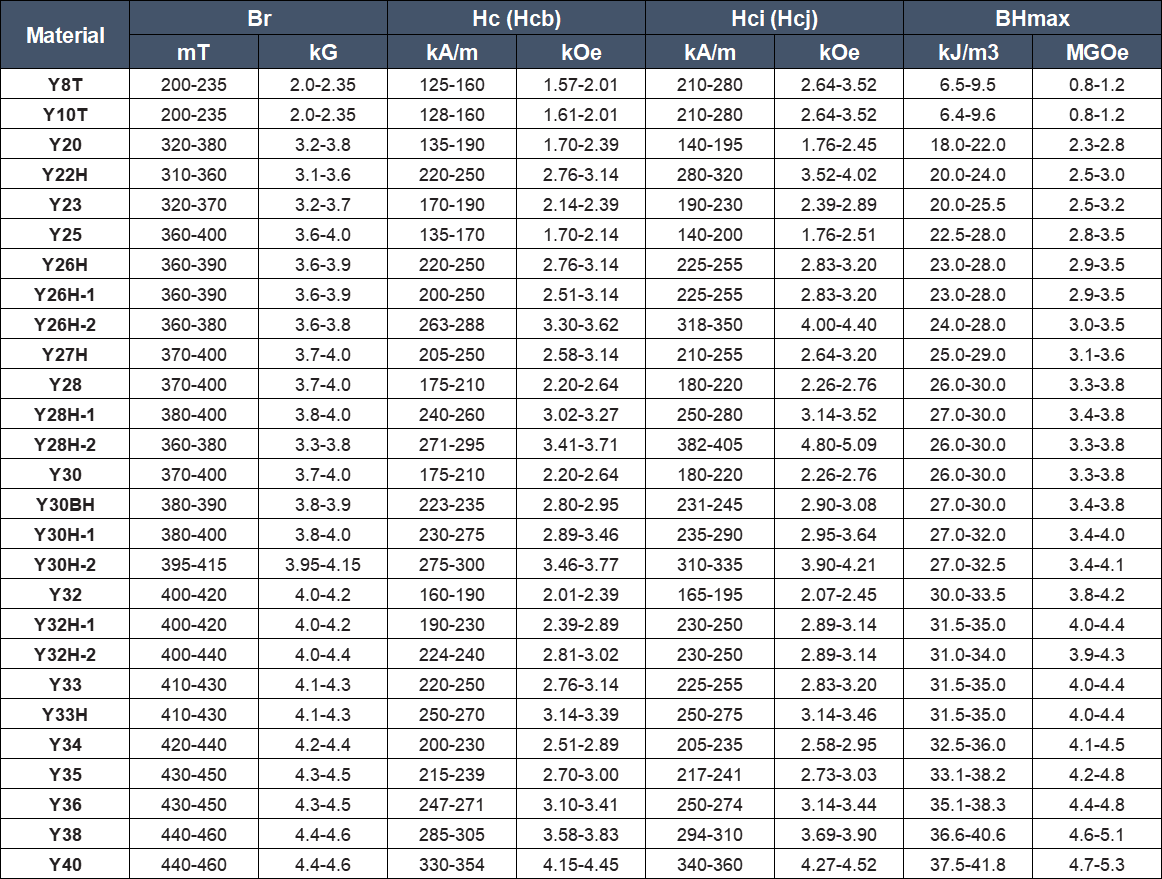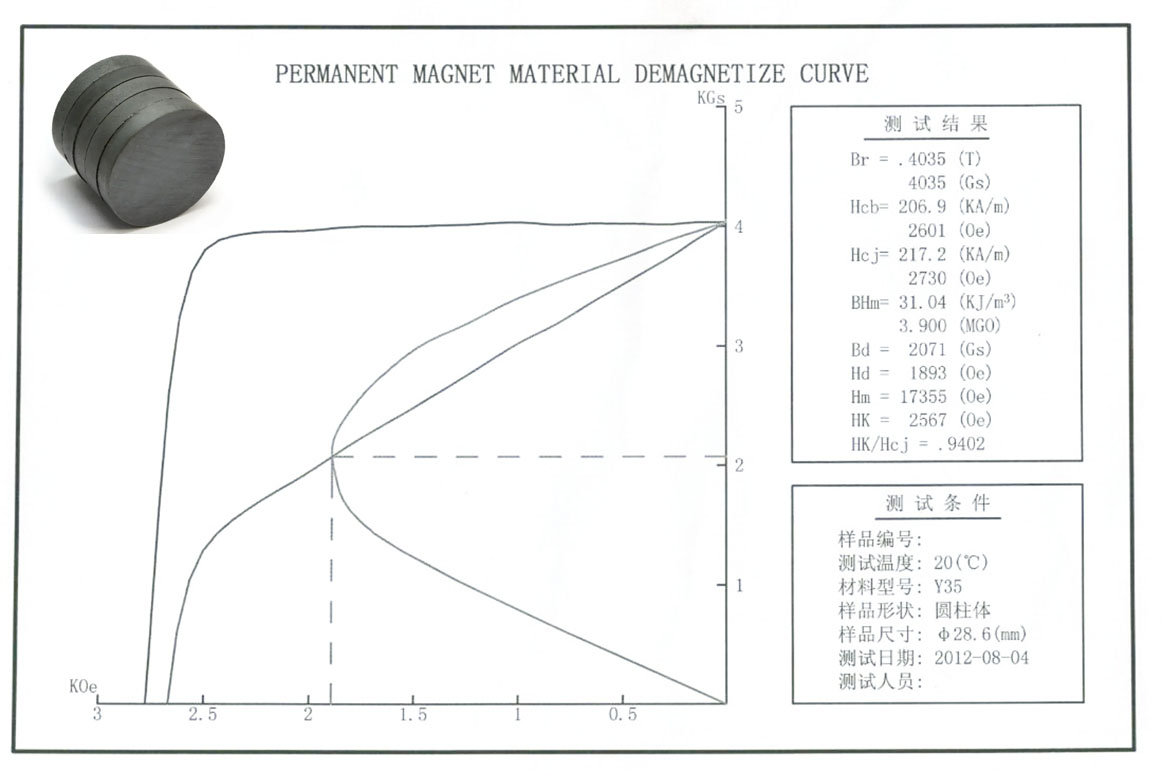
Magnetic Properties of Ferrite Ceramic Magnets
Ferrite Magnets, termed Hard ferrites, are not the same as soft ferrites as would be used in transformers.
The Chinese ferrite magnet nomenclature system has a structure to it. Y is an identifier for Ceramic Magnet / Hard Ferrite Magnet. The number following it is linked to the BHmax Energy product. Any letter after the number is an additional grade identifier. There are 27 grades of ferrite magnet.
Anisotropic grades (direction of magnetisation locked in structure) are stronger than isotropic grades.
Isotropic (unoriented) grade example:− C1; Anisotropic (oriented) grade examples:− C5, C7, C8.
Below is an example BH curve for Ferrite C5 (Y30). Ferrite C5 and Ferrite C8 are the most popular grades of hard ferrite (ceramic) magnets.
TableⅠ: Ferrite (Ceramic) Magnet grades
Chinese Standard – Commonly used globally, especially in UK and EU
Typical Values

American Standard (still in use but limited range)
Typical Range of Values

Quick Cross Reference Guide
C5 = Feroba2 = Fer2 = Y30 = HF26/18
C8/C8A = Feroba3 = Fer3 = Y30H−1.
C1 = Y10T / Y8T
C7 = Y26H−2
C8B = Y33
C9 = Y30H−2
C10 = Y33H
C11 = Y34
C12 = Y30H−2.
TableⅡ: Physical Characteristics (Typical)

Table Ⅲ: Ferrite demagnetization curve

Tolerances
Tolerances:−+/−3% is common. +/−0.25mm is also commonly used. The tolerance available will depend on the size and shape of the magnet.
Maximum and Minimum Working Temperature
(Please note − your application will affect the performance available).
The maximum recommended operating temperature is +250 to +300 degrees C.
The minimum operating temperature varies with the magnet shape and magnetic circuit. It could be as low as −60 degrees C but may be as high as 0 (zero) degrees C.
